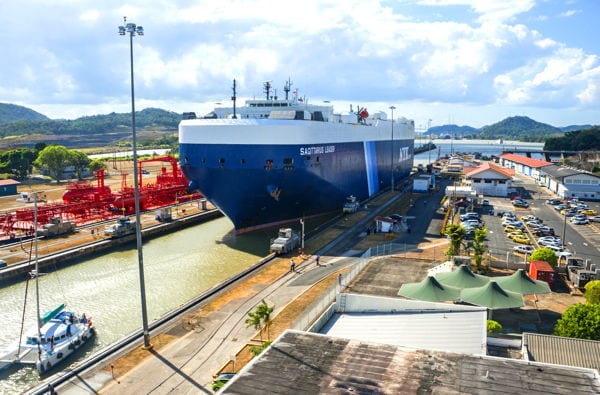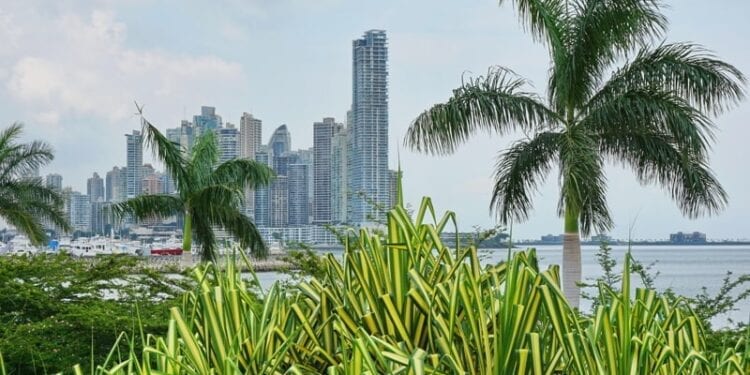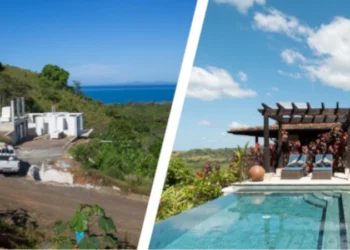Panama may not be known as a global environmental steward… especially when compared with its neighbor to the west, Costa Rica.
Recently, though, some good news for the natural world has come out of the isthmus…
Panama Canal To Be Carbon Neutral By 2030

The Panama Canal, simply by existing, helps curb carbon dioxide emissions. By transiting the 51-mile canal, ships avoid traveling the extra 9,000 miles that would be required if they were to go all the way around the southern tip of South America.
In 2020, ships avoided emitting 13 million metric tons of carbon dioxide just by using the Panama Canal… After taking a hit during March and June last year when manufacturing and consumer markets were shut down, the canal is now back at pre-pandemic traffic levels.
The long-term operationality of the canal is key to the effort to reduce greenhouse gas emissions. On April 26, the Panama Canal Authority announced plans to enhance the canal’s long-term viability as well as reduce its environmental impact. It aims to have the canal be carbon neutral by 2030.
Steps toward making the canal carbon neutral have already been taken… The Canal Authority has been tracking its carbon footprint since 2013, but in 2017, this became much more effective with the launch of the Emissions Calculator—a tool for monitoring the carbon emissions of vessels and the canal itself.
Its latest efforts include trialing electric vehicles to test whether the entire fleet can reduce its dependence on fossil fuels. Other aspects of its plan include the use of tugboats that aren’t fossil fuel reliant and a switch to renewable energy across all projects and facilities.
Panama Plans To Reforest 1 Million Hectares By 2050
Panama is one of Central America’s most densely forested countries, with 65% of its land area covered by rain forest. Since 2012, it has been losing about 8,000 hectares of forest per year due to illegal logging driven by agriculture…
But the country is now reaffirming its commitment to tackle deforestation through a variety of measures.
In 2014, it joined Alianza por el Millón, a reforestation effort that aims to reduce deforestation, protect water resources, improve agricultural productivity, conserve biodiversity, and mitigate climate change. In 2016, it joined Initiative 20×20, through which it pledges to plant 1 million hectares by 2050.
The government is addressing illegal deforestation by increasing the use of drones and satellite images to better monitor for illegal logging. It has suspended logging permits for the past year and a half and has made it more difficult for businesses to receive state loans if they are involved in illegal land and forest use.
Panama City To Double Trees Planted This Rainy Season
The only major urban center in the country, Panama City, is also being targeted for reforestation. Groups like the Greenway Reforestation Program (GRP) plan on doubling the number of trees that will be planted in Panama City’s 26 townships this rainy season.
The program is focusing on the city’s avenues and parks and tasking the community boards of each township with the responsibility of caring for the planted trees.
Panama City is pushing always for growth, and it has been in a state of expansion for many years. Signs of development are ever-present: construction sites, traffic, crowds… In the sea of cement and steel, it’s easy to forget that this is the only capital city in the world that has a rain forest within its limits.
The fact that programs like GRP exist is promising, as it shows that the city is including “greenficiation” as a key component in its development. The benefits of green spaces in city centers are well-documented: They clean polluted air, reduce noise pollution, and have a localized cooling effect on the climate.
Green spaces also improve the physical and mental health of city residents, promoting exercise, reducing morbidity and mortality, and alleviating stress. This, in turn, reduces strain on the city’s public services, like health care.
Parks also provide safe spaces for the city’s natural life, helping to maintain local biodiversity… and in Panama City, that biodiversity is astounding. If you’ve ever been to Parque Natural Metropolitano and seen the city-dwelling sloths, you’ll know this to be true.
Though Panama City is constantly growing, it has a good number of green spaces already. Aside from Parque Natural Metropolitano, well-loved and well-used green spaces include Parque Omar, Parque Clayton, Parque Andrés Bello, and the Cinta Costera.
Efforts to make Panama City more green have already begun…
Seedlings have been planted along certain stretches of Ricardo J. Alfaro Road, otherwise known as Tumba Muerto. Some 975 seedlings of tree species, like flamboyant, guayacán, and golden rain, have been acquired by the GRP and are ready to be planted this rainy season.
30% Reduction In Gas-Fueled Car Reliance In Next 10 Years
Transportation is one of Panama’s worst offenders when it comes to greenhouse gas emissions, responsible for almost half of the country’s emissions. Motor vehicle use is high in Panama, with 171 motor vehicles per 1,000 people. In 2019, the country emitted some 12 million tons of carbon dioxide.
Following through on commitments made during the Paris Agreement in 2015, it aims to reduce reliance on gas-fueled cars by 30% in the next 10 years. It launched the National Electric Mobility Strategy to initiate public transportation’s switch to electric power. It wants a 35% increase in the number of electric buses on Panama’s roads by 2030.
Two electric buses are already making the rounds on Panama City’s streets and are proving to be quieter, more efficient, and cleaner than gas-fueled buses. Last year, MiBus (which operates the city’s Metrobús line) canceled an order of 160 new diesel buses and instead bought 195 electric buses from BYD.
A fleet of 1,500 electric-powered taxis was recently commissioned for the city of Colón, also from BYD. Consumer markets also show increased interest in smaller cars and hybrids. In Panama City, the first electric vehicle recharging station in the country was installed at Alta Plaza Mall in May 2019.
Panama will also increase its use of renewable energy over coming decades… Currently, less than 10% of the private sector’s energy comes from wind and solar and about 70% from hydro. The goal is to get 95% of Panama’s energy supply from renewable sources by 2050.
Sophia Titley
Panama Insider

















